How To Make Tender Poached Chicken
This post may contain affiliate links. Read my full disclosure policy.
Tender poached chicken is easy to achieve using chicken tenderloins and the right cooking method.
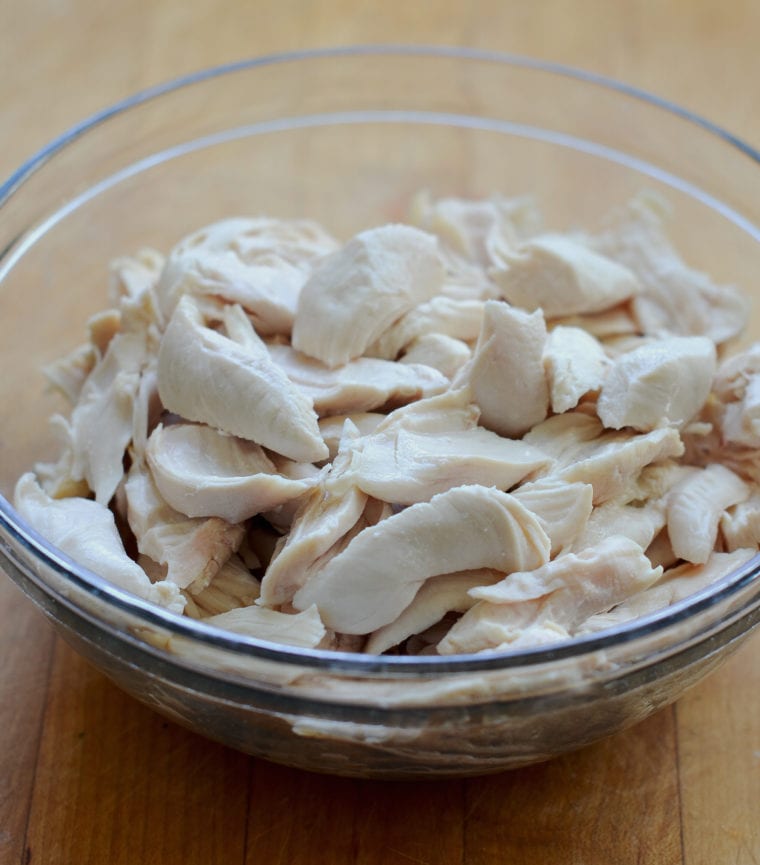
I’ve said it over and over again: in cooking, the simplest things are often the hardest to get right, and poached chicken is a perfect example. Because chicken breasts are extra lean and poaching requires zero fat, poached chicken is typically really dry. Most recipes mistakenly call for simmering boneless skinless chicken breasts over very low heat until cooked through. I prefer to use chicken tenderloins, which are more tender than whole breasts. And instead of simmering the tenderloins over low heat, I place them in a pot of boiling salted water, immediately remove the pot from the heat and cover it with a lid, and let it sit for 15 to 17 minutes, or until the chicken is just cooked through. This method guarantees succulent chicken every time.
What You’ll Need To Make Tender Poached Chicken
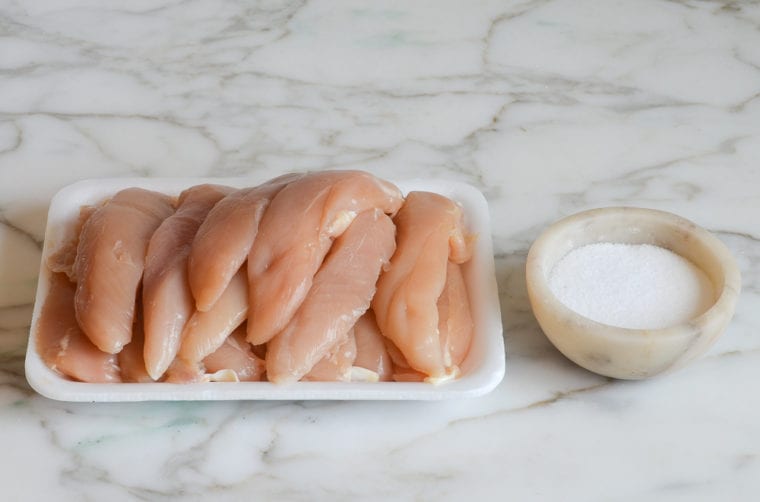
Step-By-Step Instructions
In a large pot, bring 2-1/2 quarts of water and the salt to a boil.
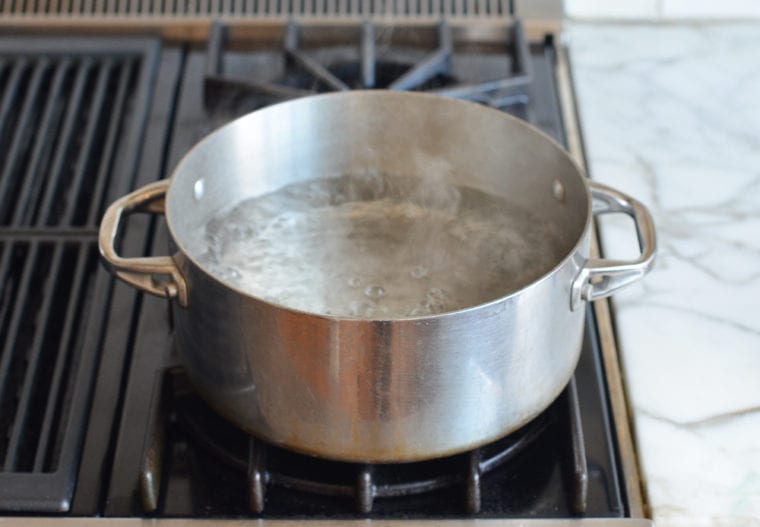
Remove the pot from the heat and add the chicken.
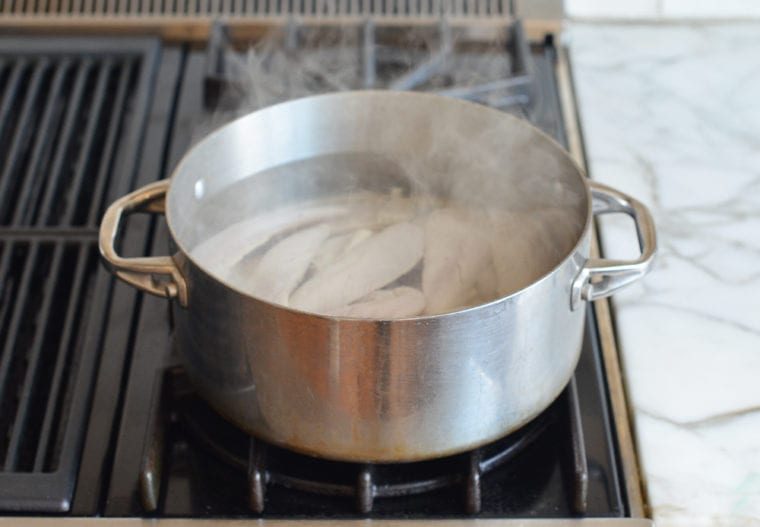
Immediately cover the pot with a lid, and let sit, off the heat, for 15 to 17 minutes, or until the chicken is just cooked through.
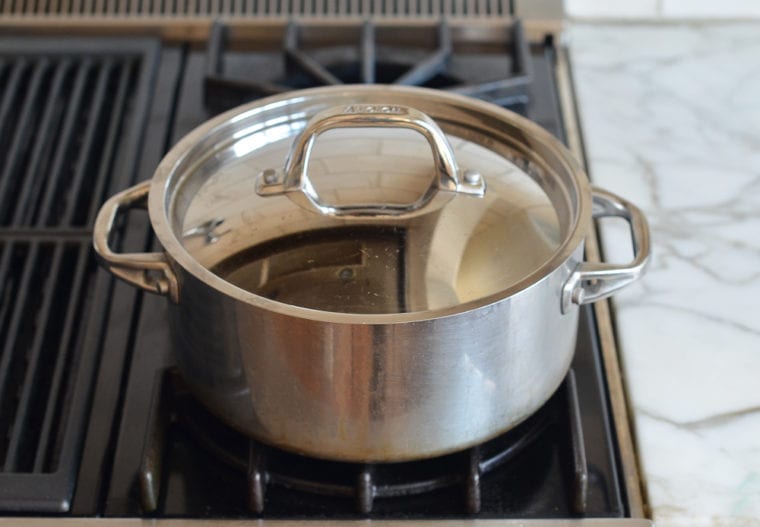
Do not overcook!
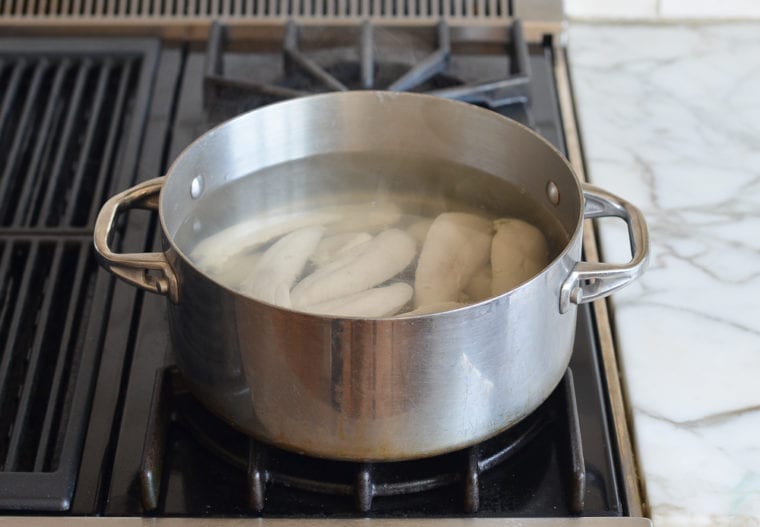
Using tongs, transfer the poached chicken to a cutting board.
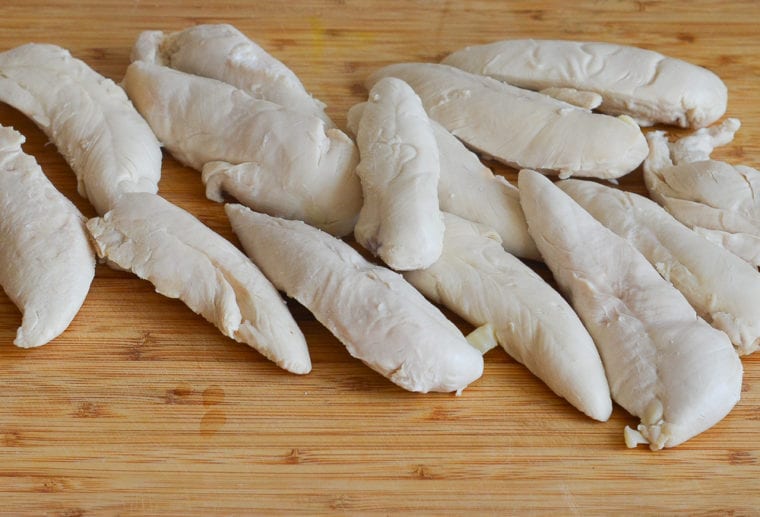
Let cool, then shred, discarding the tough tendon at the end of each tenderloin. Transfer the chicken to an airtight container, and refrigerate until ready to use. The poached chicken will keep for 3 to 4 days.

You May Also Like
- Chicken Salad with Grapes and Almonds
- Curried Chicken Salad
- Classic Chicken Salad
- Vietnamese Shredded Chicken Salad
Poached Chicken
Tender poached chicken is easy to achieve using chicken tenderloins and the right cooking method.
Ingredients
- 1 tablespoon salt
- 2 pounds chicken tenderloins
Instructions
- In a large pot, bring 2½ quarts of water and the salt to a boil. Add the chicken, immediately remove the pot from the heat, and cover it with a lid. Let it sit for 15 to 17 minutes, or until the chicken is just cooked through. To test for doneness, cut into the center of one of the tenderloins; it should be white throughout with no sign of pink. (Or insert a meat thermometer into the thickest part of the tenderloin; it should register 165°F.) Do not overcook.
- Using tongs, transfer the poached chicken to a cutting board. Let cool, then shred, discarding the tough tendon at the end of each tenderloin. Transfer the chicken to an airtight container, and refrigerate until ready to use. The poached chicken will keep for 3 to 4 days.
Nutrition Information
Powered by ![]()
- Per serving (9 servings)
- Serving size: 1/2 cup
- Calories: 265
- Fat: 16 g
- Saturated fat: 3 g
- Carbohydrates: 15 g
- Sugar: 0 g
- Fiber: 1 g
- Protein: 15 g
- Sodium: 455 mg
- Cholesterol: 41 mg
This website is written and produced for informational purposes only. I am not a certified nutritionist and the nutritional data on this site has not been evaluated or approved by a nutritionist or the Food and Drug Administration. Nutritional information is offered as a courtesy and should not be construed as a guarantee. The data is calculated through an online nutritional calculator, Edamam.com. Although I do my best to provide accurate nutritional information, these figures should be considered estimates only. Varying factors such as product types or brands purchased, natural fluctuations in fresh produce, and the way ingredients are processed change the effective nutritional information in any given recipe. Furthermore, different online calculators provide different results depending on their own nutrition fact sources and algorithms. To obtain the most accurate nutritional information in a given recipe, you should calculate the nutritional information with the actual ingredients used in your recipe, using your preferred nutrition calculator.

This is now my go-to method for meal prepping for the week. It’s so low effort for such great results. The tip to wait to pull the yucky stringy bit out until after the tenderloins are cooked is genius–usually I avoid tenderloins for exactly that reason. This produces moist, delicious results every time with no need to babysit it, so I can make it in the background while I prep veggies and salads for the week. Thank you!!
Love this! Have used it to make your various chicken salads or anytime I need to add cooked chicken to a chili or Buffalo dip, this is so helpful! Quick question, how/would this change if I wanted to double the amount of chicken? I want to make a huge batch of chicken salad for a potluck. Thank you!!!
Glad you like it! You really don’t need to modify the recipe; just make sure you have a pot large enough to fit all the water/chicken. If not, you could always cook it side by side in two pots.
Is it necessary to add the salt to pot? I have to watch my salt intake.
I love your site & recipes! Waiting for your 2nd cookbook to arrive.
Hi Chris, no, it’s not absolutely necessary to add the salt to the pot. You just may need to salt the dish that you’re using the chicken in to give it a bit of flavor. And thanks in advance for your support with the cookbook! 🙂
Great healthy way to cook chicken. No added fat and very tender chicken. Great for salads and wraps. Thank you!
I just tried this and the chicken was not cooked inside at all, what could have gone wrong?
That’s really strange, Esther! Did you use chicken tenderloins and let them sit in the pre-boiled water for 15 to 17 minutes?
Yep followed directions exactly and they were totally pink inside
That’s so strange. Perhaps your tenderloins were thicker than your average tenderloin. If you try this again, you may want to flatten/thin out the tenders a little bit by applying pressure with your palm. Sorry you had a problem with them!
I’m going to try again but I noticed in the paragraph you say
“I place them in a pot of boiling salted water, immediately remove the pot from the heat and cover it with a lid, and let it sit for 15 to 17”
but in the instructions it says to
“Remove the pot from the heat and add the chicken.”
which is what I did and perhaps it should have been the first way?
Hi Esther, I don’t think that would make any difference (but I did align the wording so that it is consistent in the intro and the instructions). I hope you have better luck this time!
If you have a very thin pan it may cool off too quickly. If you have stainless steel cookware it should work to cook them
How would you alter this recipe for chicken breasts?
You’ll definitely get a more tender result with tenderloins. That said, if using breasts, I’d suggest cutting them into the size of chicken tenderloins and then follow the timing in the recipe. Hope that helps!
This is so easy! I tried it with very thin breast slices and it was far from dry. I used the poached chicken for Lemon Chicken and it was delicious.
If all you have are large boneless, skinless breasts (not tenderloins), bring a large, heavy pot of water to a hard boil, add the chicken, cover, then turn off the heat. Go do something else for the next two hours. After two hours, the chicken will be perfectly cooked/tender, still plenty warm, and ready for use. Just don’t forget about them and go to bed; I speak from experience!
Thanks, Lisa, I was wondering how different it would be with chicken breasts, which is what I always have on hand.
I’m fanatic about food safety, so I wonder if this temp may be too low after two hours to be safe?
Jenn, two questions . . . do you think I could substitute Greek yogurt (full-fat or low fat) for the sour cream? and do you think this would be a good dressing for a regular salad? If so, would you thin it out in any way? I can’t wait to make this!
Hi Judith, I do think you could use Greek yogurt for the sour cream, but don’t think the dressing would be a candidate for other salads. Instead, you could try this Buttermilk Ranch. Hope that helps!
Worked perfectly! Quick and easy!
Love it!
Thank you for supplying a printable recipe for poached chicken!